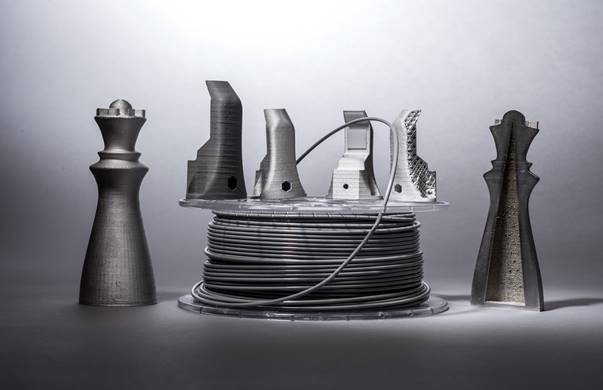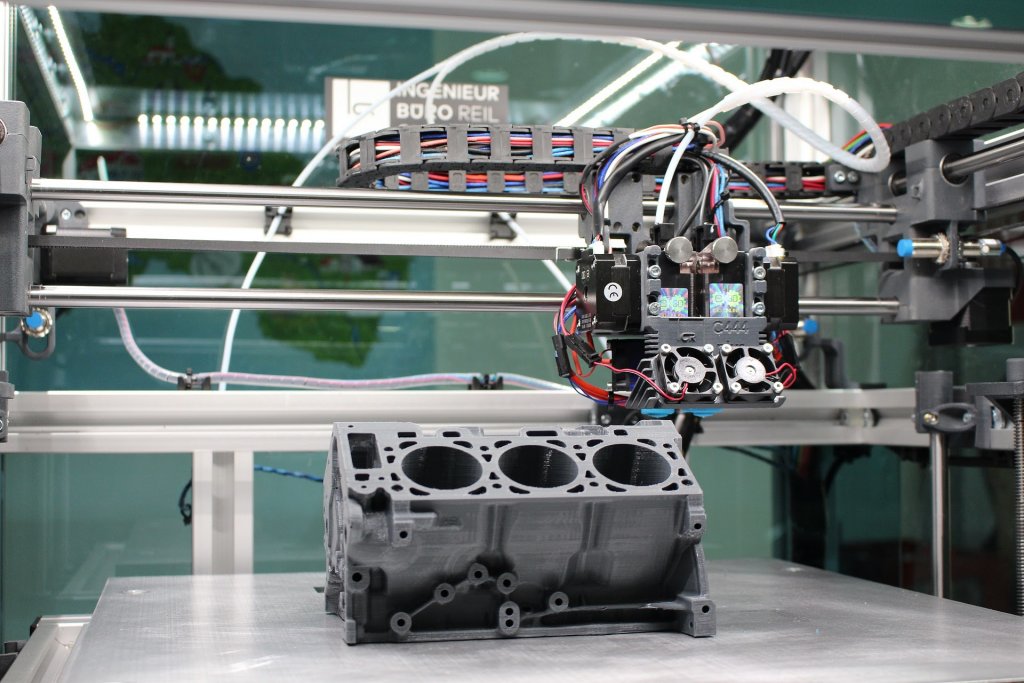3D Printing Industry Review of the Year May 2019
3D Printing Industry Review of the year: February 2019
Polymer 3D printing at the 2019 TCT Show
Ultimaker launches S3 3D printer and S5 Pro Bundle – technical specifications and pricing
Ultimaker Releases S3 and the S5 Bundle
Dutch company Ultimaker today released the S5 bundle meant to improve the results of its S5 printers and also its new S3 printer.
The S5 bundle includes the Ultimaker S5 Air Manager. This Air Manager encloses the printer and controls the air inside your printer. This improves the safety of your device and its environment. I really welcome this step since while printing TPU, carbon fiber and carbon nanotubes but also with the less exotic ABS toxic and even potentially carcinogenic particles can come off of your 3D printer. In addition to the safety benefits, this controlled air will improve your print results since it minimizes distortion from airflows from air conditioners and the like while also keeping humidity constant. I would expect similar packages or functionality to be added to all Pro printers in the future. Air filtration and safety coupled with better print results are an absolutely essential step if I want to have 3D printers in our homes, schools and offices.
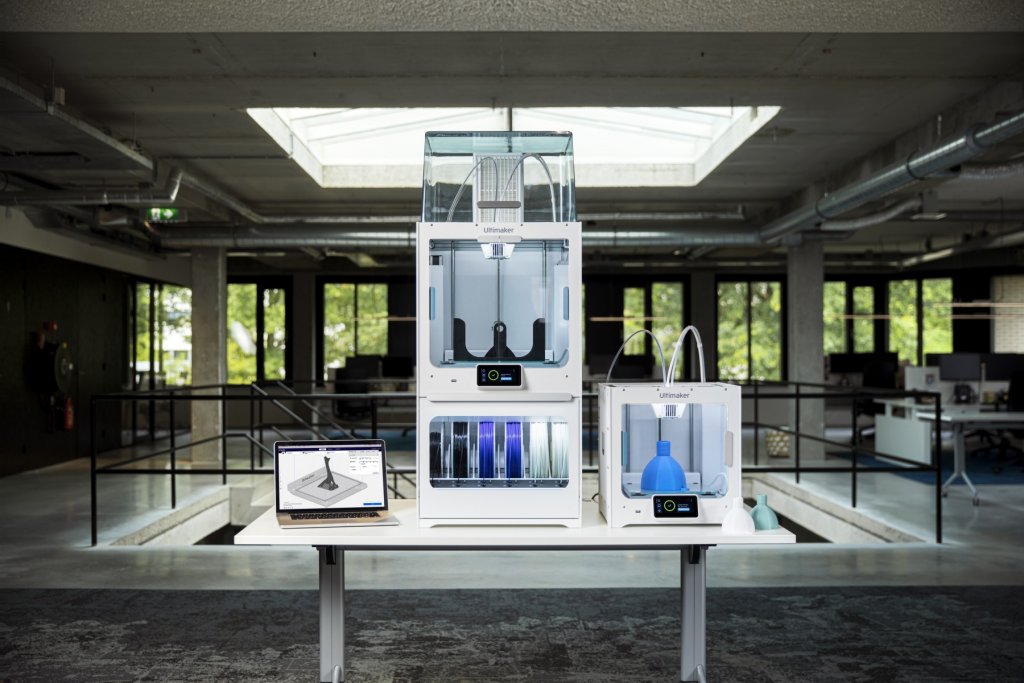
The Ultimaker Material Station is also a welcome addition to any 3D Printer operator’s arsenal. The station lets you load six different material spools into your 3D printing bay where they will be kept in a low moisture environment. Silica gel will keep humidity below 40 percent relative humidity. This reduces breakage problems in PLA and can let you print with PA and other materials that suck up a lot of moisture. I’m skeptical that the pre-feeding will work well but again this is something that all Pro printers will have eventually. I’m also wondering how the silica gel’s performance will stack up to more active cooling solutions such as the industry-leading dryers from Mass Portal that let you condition and manage your filament temperature as well as humidity actively. Such a solution will be superior to the Ultimaker approach but the Material Station should be a tidy place to store filament and reduce breakage for most people.
DSM’s Hugo Da Silva is optimistic,
“The inclusion of the Ultimaker S5 Air Manager and Ultimaker S5 Material Station with the successful Ultimaker S5 is another step toward taking additive manufacturing into production environments. The additional functionality will allow engineering materials, such as those of DSM, to be printed more safely and consistently. This will bring additive manufacturing technology within reach of many more players and help us manufacture tomorrow.”
This is especially true for them since DSM makes a lot of PA and this has been problematic to print for most operators due to moisture filling the material in a matter of hours. The fact that the bundle costs 9.100 USD or 8.685 Euros indicates that Ultimaker is moving upmarket and towards higher-priced enterprise offerings. This is a smart move because there really isn’t much available between $1200 printers that work OK but require too much labor and enterprise like office systems that cost $20,000 or so. 10k or more is a fantastic price point for Ultimaker to operate at. If they were to up their game and obtain the same performance that Mini Factory, Intamsys and 3DGence have in 3D printing PEEK then access to ultra-high-performance polymers would let them sell a good enterprise solution for 20-25,000. As it stands the current bundle is probably a good deal for most businesses and has a great chance of becoming the default printer for most businesses.

For companies and individuals that are looking for less expensive solutions Ultimaker has launched the S3. The S3 which costs 3.995 Euros or 4.395 USD.
The company touts its, “heated build plate, advanced active leveling, a stiffer build platform, and accurate stepper drivers result in the highest print quality of a machine in this form factor. The dual filament flow sensors can detect empty filament spools in the Ultimaker S3 and will automatically pause print jobs so that users can immediately replenish materials and keep the machine running seamlessly.”
I’m not sure why businesses won’t just spring for the S5 bundle, and I suspect that specifically for air quality you’d want to do that in almost all cases. As for consumers and people on a budget, they could get 4 Prusa Originals for this? I could buy a Formlabs Form 3 and a Prusa Original i3 for this price? Would it be worth it? Whereas the S5 Bundle seems like a great product for many companies I’m not sure who the S3 is for exactly. To me, Ultimaker is really giving businesses what they need if they could just up their game to give the S5 the ability to print at 420C. Then they’d have an industry-leading solution. As it stands they have something that should work for many businesses. The S5 is a great printer and these additions should improve results but this launch has really given companies such as 3DGence and Minifactory a lot of breathing room to prosper for more demanding users.
The post Ultimaker Releases S3 and the S5 Bundle appeared first on 3DPrint.com | The Voice of 3D Printing / Additive Manufacturing.
3D Printing Buying Guide 2019
What a difference a year makes. Once again we’ve seen some monumental shifts and changes in the 3D printing landscape for desktop 3D printers. At the low-end competition has been murderous with many players forced from the market. In the midrange and higher-end systems, we see more sophistication and refinement. Many vendors are improving their systems to cater to users in reliability and usability here. Compared to only a few years ago, 3D printing is becoming much more accessible and cost-effective to do. In higher-end systems, we are getting easy to use systems that are accurate and reliable. 3D printing is still not simple, but it is getting much better for you, the user.
We created this guide to be a resource for you. We hope that we can help you find some systems that are worth considering at every price point.
The desktop 3D printing market consists of low-cost desktop 3D printers for around $500, midrange systems for approximately $1,000 and Pro systems for above $2,500.
Low-Cost Desktop 3D Printers
In low-cost systems, printers barely work or function intermittently. There is often some assembly required and a lot of tweaking to be done. With Tender Loving Care, these printers can work. They’re for those who are budget constrained or want to impulse buy a printer. I’d recommend them to someone who likes to hardware hack and modifies things but not if you’re going to print a lot of stuff. It would be perfect for the mechanical engineering student who has time to invest in improving it.
It’s worth noting that specifically in this segment, paid reviews, and affiliate links are the norm. Due to this, many may have gotten have an overly optimistic view of these printers. Many reviews online contain falsehoods and over claim. Simultaneously some marketing tactics employed by players in this market segment are deplorable. They include behavior such as negatively reviewing each other’s printers. In some cases, companies are claiming that a competitor’s printer has had disastrous failures or fires (additionally, sometimes these things actually catch fire as well). Even for our market, this is very cowboy territory, so buyer beware.
XYZ Printing Da Vinci Nano $221

The Da Vinci Nano has a tiny build volume, but this compact printer has an enclosed printer that comes with software and anything you need to get started for $249. Print quality is not stellar, but the ease of use, especially out of the box is good.
Monoprice MP Select Mini Pro (V3) $199
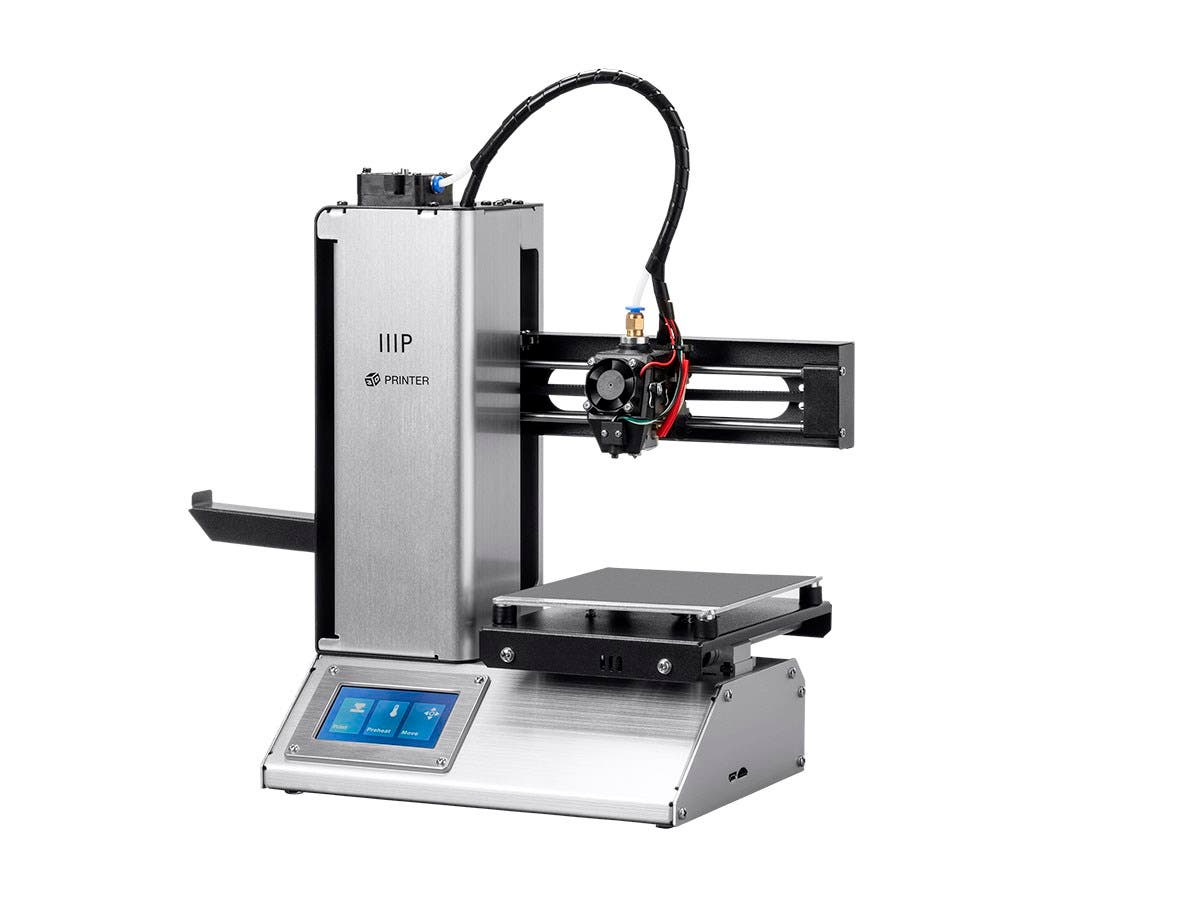
In aluminium, I also think this looks fantastic.
Monoprice is good at improving and rebadging existing printers and selling them at extremely low price points. The previous versions of the Select Mini V3 built up quite a following. This printer engendered a lively Facebook group that helped you support and improve the machine. In some cases, it seems to have gotten out of hand with people spending much more on upgrades than on the base machine. Although there is a lot to be said for sticking to the old V2 version, given how much information is out there on how to hack it, the new V3 irons out a lot of kinks for a low price. Build volumes are small, but this still is a competent printer that’s relatively easy to use.
The Ender is a value-engineered printer with a large build volume that needs tweaking, love, and care. By no means a high-quality experience or part. But, if you do give it that care this can turn out to be a real workhorse for you.
I’ll probably get a lot of flack for this since the previous version had issues with catching fire. Reviewers that I know and trust however have managed to run this one without any hitch for months now. Simple and a lot of bang for your buck, now with an aluminum frame.
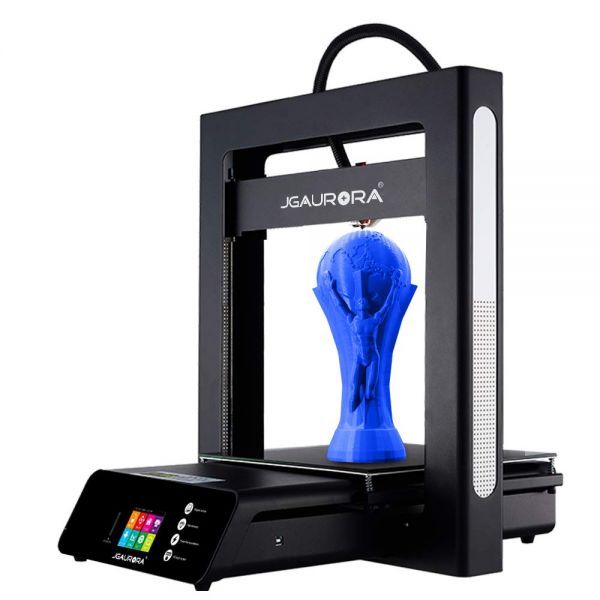
There seem to be some QC issues with the JG Aurora printers but there is a community to help you with that. Some people are ecstatic with them while others complain of assembly and wiring issues. At any other price point, I’d find this difficult to recommend, but the results that selected people have been getting from this machine are stellar.

I love this thing. It’s enclosed, relatively well built and for around $400 to $500 is a great buy. Flashforge has been plugging away at making better and better printers for years now, and this one seems a real winner. There is no real community around this printer yet, but it’s worth the extra money to have more ease of use. Heated bed, wifi, filament end detection, cloud printing, simple nozzle removal, it packs a lot of features. The only super annoying thing is that it limits you to using 0.5 Kg rolls of filament which means that you have to spool on a smaller spool interesting filaments.
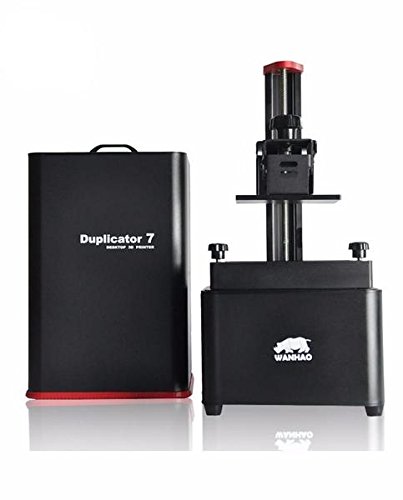
We are seeing a huge expansion in low-cost DLP and SLA systems. Partially due to consumer interest and partly because these systems have few moving parts, these are becoming more available. Better optics and lower cost light sources from LCD, DLP and other sources are also feeding this trend. There is a massive amount of systems out there now. The one with a track record at $500 is the Duplicator. Please be careful with all SLA and DLP resins, but the fine detail will amaze at this price point.
Midrange Desktop 3D Printers
Midrange systems are best for people who want to print parts. They are more reliable than entry-level systems and have components that last longer. With a lot of tweaking, some of these systems provide high-quality parts. Official Prusa i3s, for example, can with correct tweaking make great parts even for manufacturing. We’re seeing better prints in this category and more things such as touchscreens while automated bed leveling is becoming commonplace. In this category, more people are paying attention to the ecosystem, so looking at filaments, settings, and software to enable better prints and better user experience.
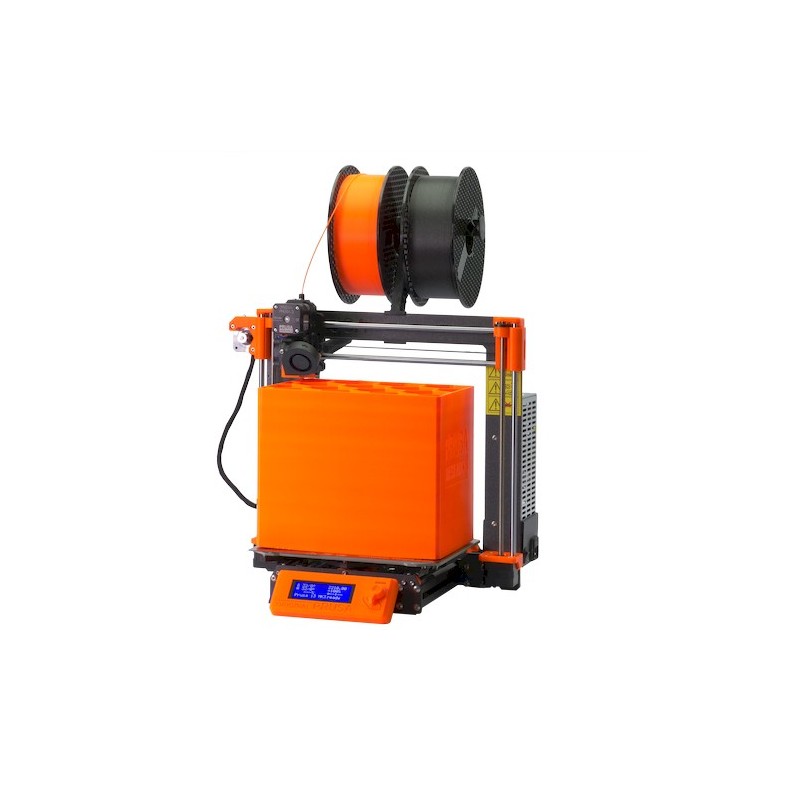
The best just got better. The Original is an amazing assembled 3D printer for $999. If you want a first printer, buy this one. If you want a printer to hack, modify, and improve, buy this one. If you want a motion stage for your bioprinting lab, buy this. Well calibrated Prusa’s make some of the highest quality FDM 3D prints out there. Yes, there is a steep learning curve for a beginner, but this could be your first printer and your last one as well.
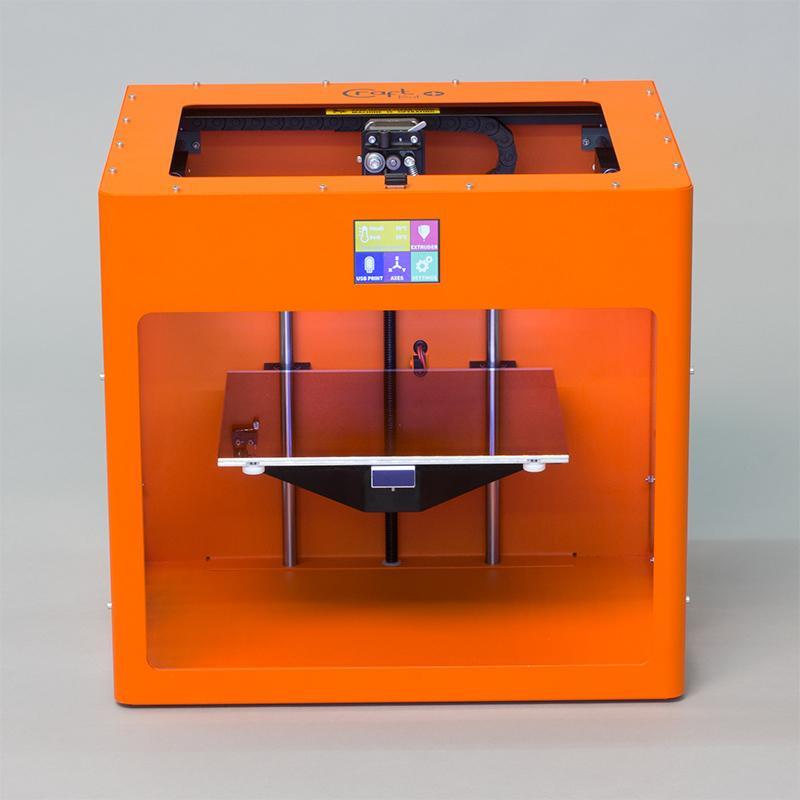
A Craftbot Plus is an excellent printer to buy for around $999 while the Craftbot XL is a large build volume workhorse for $1900. I love what Hungarian firm Craftbot is doing on software, support and most of all on building these reliable fire and forget 3D printers that are a dream to use.
Pro 3D Printers
Pro 3D printers are meant to be used for businesses. Generally, more effort has been put into ease of use, component quality of the hardware, user-friendliness of screens and software as well as print quality. Build volumes and speeds should be higher as should overall performance. These printers now are approaching “printing with a few clicks and some user knowledge,” and hopefully we’ll see more “fire and forget” and less “guess your way to a part” in the future.

Uniquely, Formlabs has a wholly integrated vision for the desktop from materials to manuals and software. Formlabs top-down ecosystem means that you are constrained to a certain degree. But, in place of this comes an ease of use that other systems simply do not have at all. The Form 3 comes with more refinement in software, sensors, and better screen removal, which should enable more accurate parts with both more extensive and more delicate cross-sections. The Form 3 is new, so it has a limited track record as of today. If you want to opt for more of a track record, get a Form 2. This is still the best desktop SLA and one of the best printers out there.
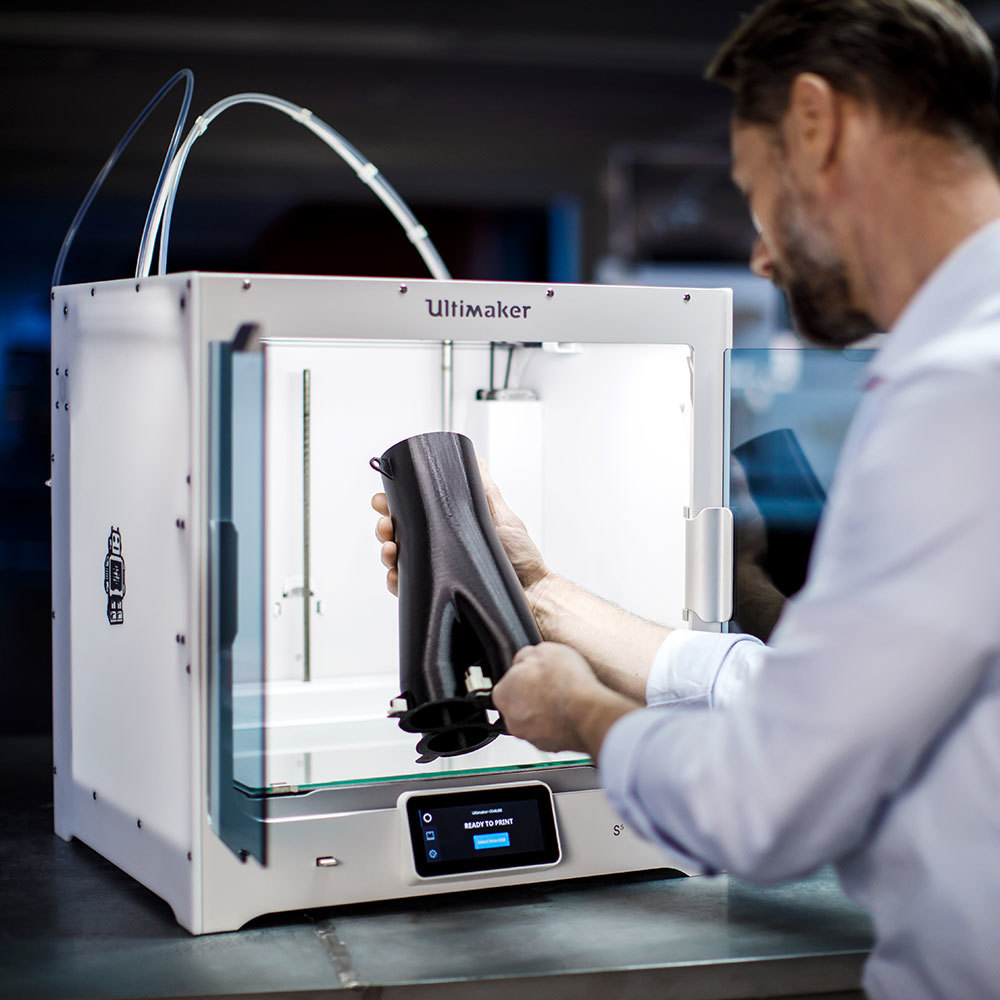
The S5 is a reliable printer that can repeatably make FDM parts with a lot of accuracy. $6000 is a lot of change when compared to a lot of other printers out there. If you want ease of use and are using this as a central printer for your office or just want the least total headaches, then the S5 is a great tool. I’m still in love with the print cores feature of these machines and their overall simplicity for me as a user.
The post 3D Printing Buying Guide 2019 appeared first on 3DPrint.com | The Voice of 3D Printing / Additive Manufacturing.
BASF Commercializing Metal-Polymer 3D Printing Composite Material with iGo3D, MatterHackers, and Ultimaker
 BASF 3D Printing Solutions, a subsidiary of German chemical company BASF that’s focused entirely on 3D printing, has been working to build up its materials inventory over the past two years. In 2017, BASF formed a partnership with Essentium for the purposes of developing more robust FFF 3D printing materials. A new partnership focuses on the industrial Ultrafuse filament family, which includes extra-strong Ultrafuse Z for the desktop. Now, it’s introducing a new Ultrafuse material: Ultrafuse 316L metal-polymer composite.
BASF 3D Printing Solutions, a subsidiary of German chemical company BASF that’s focused entirely on 3D printing, has been working to build up its materials inventory over the past two years. In 2017, BASF formed a partnership with Essentium for the purposes of developing more robust FFF 3D printing materials. A new partnership focuses on the industrial Ultrafuse filament family, which includes extra-strong Ultrafuse Z for the desktop. Now, it’s introducing a new Ultrafuse material: Ultrafuse 316L metal-polymer composite.
“Ultrafuse 316L can, under certain conditions, be processed on any conventional, open-material FFF printer. Our goal was to develop a high-quality metal filament that makes the additive manufacturing of metal parts considerably easier, cheaper, faster, and accessible to everyone,” explained François Minec, Managing Director, BASF 3D Printing Solutions.
In the past, FFF was limited to just using thermoplastics. But BASF Ultrafuse 316L is a metal filament with polymer content, the latter of which acts as a binder during the printing process. The main polymer content, or primary binder, from the ‘green’ part is removed through catalytic debinding, which then results in the brown part of pure metal particles and the residual (secondary) binder. Industry-standard debinding and sintering processes take this secondary binder out of the brown part, while the metal particles combine. Post-sintering is when the material achieves its final hardness and strength properties – 316L stainless steel.
Ultrafuse 316L was specifically designed for safe, cost-effective printing of fully stainless steel objects on open FFF 3D printers for metal tooling, prototypes, and functional parts. Now, BASF has begun to commercialize the material with a trio of companies – professional desktop 3D printing solutions provider iGo3D, 3D printing retailer MatterHackers, and desktop 3D printing leader Ultimaker.
“In comparison to Metal Injection Molding (MIM), the Ultrafuse 316L offers an office-friendly solution, which opens new production opportunities. To reach the full potential of the metal filament and to ensure a solid start, it is necessary to understand that Ultrafuse 316L is not a conventional filament. Our goal is it to provide full service packages and support from the first request up to the finalized and sintered part, to implement metal 3D printing as a natural component in your manufacturing process,” said Athanassios Kotrotsios, the Managing Director of iGo3D.
The risk of defects is lower, and the success rate higher, when using Ultrafuse 316L due to the metal content being in the high 90% range, and an even distribution of metal in the binder matrix. In addition, the possible occupational and safety hazards that come with handling fine powders are significantly decreased with this material, because the metal particles are immobilized in the binder matrix.
“Ultrafuse 316L from BASF enables engineers and designers to produce true, pure, industrial grade metal parts easily and affordably using desktop 3D printers. This material is a significant technological advancement and truly a shift in how we describe what is possible with desktop 3D printers,” said Dave Gaylord, Head of Products for MatterHackers.
The new Ultrafuse 316L metal composite filament is strong and flexible enough to be guided through complex material transport systems, and works with both Bowden and direct drive extruder types.
Paul Heiden, Senior Vice President Product Management for Ultimaker, said, “The Ultimaker S5 raises the bar for professional 3D printing by offering a hassle free 3D printing experience with industrial-grade materials. We are proud to announce that print profiles for Ultrafuse 316L will be added to the Ultimaker Marketplace. 3D printing professionals worldwide can then use FFF technology to produce functional metal parts at significantly reduced time and costs compared to traditional methods.”
BASF will provide 3D printer processing guidelines and parameter sets for Ultrafuse 316L, in addition to on-site support and consultancy to make sure that the material is performing up to snuff on your choice of FFF 3D printer. But if you’re interested in learning more about how to use the material now, you can check out this tutorial from MatterHackers about BASF’s new Ultrafuse 316L:
Metal polymer materials will let a lot more people 3D printing stronger materials. However, it has to be noted that a completely new geometry will most probably not work the first time with this process. Shrinkage rates in parts vary across wall thicknesses, part sizes and even geometries. During the sintering, process parts will tend to not shrink uniformly. The currentl limitation with Ultrafuse is therefore the same one that affects binder jetting with metals. For series of the same parts this is very interesting currently and it should be a solvable challenge to make shrinkage more predictable. But, the sheer data involved to predictably predict part outcomes at many geometries and do then in software predictively deform parts would be vast. So solvable, but still a difficult challenge to undertake for these partners and the industry as a whole.
Discuss this news and other 3D printing topics at 3DPrintBoard.com or share your thoughts in the Facebook comments below.
[Images: BASF]
The post BASF Commercializing Metal-Polymer 3D Printing Composite Material with iGo3D, MatterHackers, and Ultimaker appeared first on 3DPrint.com | The Voice of 3D Printing / Additive Manufacturing.
Royal DSM Will Choose Ten Startups to Participate in the I AM Tomorrow Challenge
Royal DSM, headquartered in The Netherlands, is a global company based on science and sustainable living—with serious dedication to 3D printing also, as they realize the incredible potential such technology offers so many industries around the world. Now, they are offering an acceleration program in large-scale 3D printing and additive manufacturing for startups and scaleups, with a focus on data analytics, artificial intelligence, and related software. The teams will also participate master classes, be exposed to ‘exclusive’ networking opportunities, and receive expert coaching sessions.
 The I AM Tomorrow Challenge, in collaboration with HighTechXL, Hexagon, and Ultimaker, chooses a limited number of companies to participate in the unique ten-week acceleration program meant to help launch new businesses or help existing ones evolve further. DSM offers funding or partnerships to some startups who complete the acceleration program, with applications accepted through August 8. Only ten companies will be chosen to attend, either at HighTechXL’s campus in Eindhoven or Boston, MA.
The I AM Tomorrow Challenge, in collaboration with HighTechXL, Hexagon, and Ultimaker, chooses a limited number of companies to participate in the unique ten-week acceleration program meant to help launch new businesses or help existing ones evolve further. DSM offers funding or partnerships to some startups who complete the acceleration program, with applications accepted through August 8. Only ten companies will be chosen to attend, either at HighTechXL’s campus in Eindhoven or Boston, MA.
While many industrial companies are just beginning to embrace the benefits of 3D printing, a rare few others have been in on the secret for decades—and DSM is one of those pioneers, at the forefront of AM processes for over 25 years with their Somos® products. With an eye to the future and the realization of how important new startups are to the ‘digital ecosystem,’ DSM is helping to mold the continued expansion of 3D printing in the next decades.
The DSM team lists their reasons for creating the program:
- Recognition of the power of 3D printing
- World-class materials expertise
- Global reach
- Expansive industry network
- Financial resources
DSM has already invested in over 50 companies spanning Europe, the US, and Israel since 2001. This is their ninth challenge for startups, and all part of their mission to build sustainability throughout the world.
“Digitalization will transform the world of manufacturing. By building an ecosystem of partners, we can work together to create tools that support 3D printing design and production, helping our affiliates and customers create innovative new products in a more sustainable way. The I AM Tomorrow Challenge is a step toward a brighter future,” said Hugo da Silva, VP Additive Manufacturing DSM.
Hexagon’s Manufacturing Intelligence division is also working toward an end-to-end digital solution for AM processes, and they will be connecting with both DSM and partners in assessing and companies participating in the acceleration program that might be able to participate in development.
Royal DSM continues to be a force in 3D printing, from collaborations with companies like Briggs Automotive Company to partnerships with FormFutura and development of materials for new 3D printing systems. What do you think of this news? Let us know your thoughts! Join the discussion of this and other 3D printing topics at 3DPrintBoard.com.
[Source / Images: DSM press release]
The post Royal DSM Will Choose Ten Startups to Participate in the I AM Tomorrow Challenge appeared first on 3DPrint.com | The Voice of 3D Printing / Additive Manufacturing.


